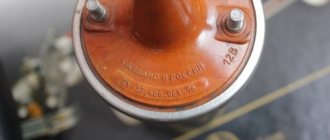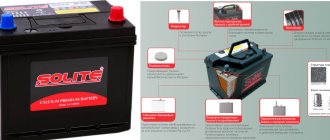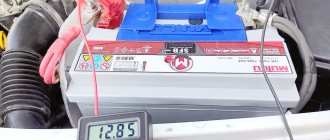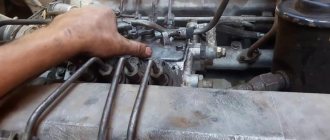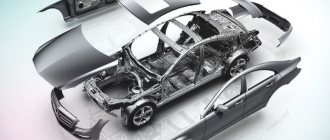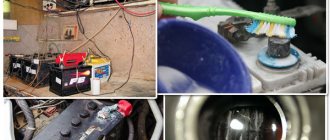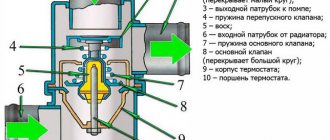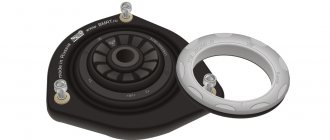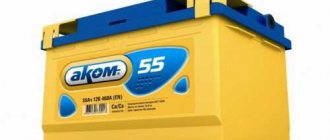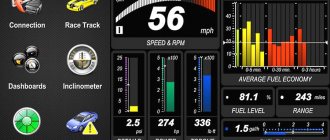Do you know, dear readers, that when using cars with a TSI engine, almost every car owner has miscalculations in its operation?
A turbocharged petrol engine is a serious thing and requires knowledge to operate. For example, insufficient care of the intake and lubrication system can cause a malfunction of the engine. The main principle of correct use of a turbo engine is to constantly monitor the quantity and quality of oils used, start and stop the engine according to the rules and impeccably comply with all standards.
Oil level
There are many recommendations for operating cars with turbo engines. First, let's figure out the amount of oil. A lack of oil is strictly contraindicated for this engine. Its level must be constantly monitored. Lubrication is simply necessary for the productive operation of bearings and all main parts of the turbo engine. It is clear that if the oil level drops, engine parts, left without the required amount of coating, will quickly wear out and become unusable.
If, when checking the turbo engine lubrication, a shortage of its recommended volume is detected, it means that the oil must be added urgently. Along with this, you immediately need to determine the source of rapid oil consumption. Check the serviceability of the oil pump and other main parts. When solving this problem, extreme care is required. The cause must be eliminated immediately.
You can find out how to properly check the engine oil level, as well as what oil level should be on the dipstick in the engine by following this link.
Possible problems
The turbocharger heats up to 1000 degrees during operation. The hot gas of the exhaust system passes through the “snail” and spins it over tens of thousands of revolutions. The turbine heats up, and in this case it is very important to maintain a balance of operating temperatures. Therefore, in cold weather it is necessary to operate the turbine correctly.
Question and answer Why does the engine bend the valves and how to protect yourself from this?
When parked overnight in the cold, the turbine cools down greatly. The rubbing parts of the snail, shafts, bearings and other components change in size due to thermal expansion. In addition, the oil settles overnight and the working surfaces experience a shortage of it. During a cold start, you cannot immediately load the turbine due to the risk of active wear. At the moment when the engine speed rises above 2.5 thousand, the turbine enters operating modes and pumps air into the mixture preparation system. The “snail” heats up sharply, and there is an active thermal expansion of the materials of the parts. In a matter of moments, the gaps between the rubbing surfaces can change up to several microns, which is why there is a risk of rupture of the oil film and damage to the working surfaces. Thus, even after a couple of hours in the cold, the engine must be properly warmed up before driving. Otherwise the turbine is finished.
The first signs of a dying turbo are unusual noises that appear after starting the engine. An extraneous hum or whistle is heard. At the same time, bluish smoke comes out of the exhaust pipe, and increased oil consumption is observed. The lubricating fluid penetrates through the gaps in the retaining rings and is pumped along with air into the exhaust system. After warming up, the noise and smoke disappear, but the engine noticeably loses throttle response. The turbine cannot provide the normal level of air pressure, causing engine power to drop.
Meanwhile, even with a well-warmed engine, increased oil consumption continues. The oil passes through the resulting play to areas of high temperatures, and carbon deposits appear on the bearing shafts, which first unbalances the “snail” and then provokes the gradual destruction of bearings and other parts. And this happens due to improper driving in a cold car in the first minutes after the start.
The quality of the oils used in the turbo engine
You need to remember well that when maintaining a car with a turbo engine, you will not be able to save money on it. It is also very important to understand that the oil being poured is taken exclusively from the manufacturer and only as specified by the manufacturer. Using low-quality oil is detrimental to the engine.
Of even greater importance is the fact that the lubricants offered by manufacturers for turbocharged engines are designed for extreme loads and the harmful effects of high-temperature conditions. Since in a simple motor the loads are not so strong. And therefore their characteristics differ from oils designed for simple engines.
We will also emphasize that you should not mix different types of oils. If an oil of one type of viscosity was used in a car with a turbo engine, it is prohibited to fill it with a different one. It is also not advisable to change the brand of lubricant; it is best to use one all the time. All this will significantly extend the life of the turbo engine. Remember that a turbocharged engine needs to be given the best possible oil!
We also recommend reading an article on the topic: is it possible to mix motor oils from different manufacturers, groups or categories by clicking on this link.
We recommend another useful article: whether you need to flush the engine when changing oil to another manufacturer, you can read it by clicking on this link.
What is a turbocharged engine
All internal combustion engines operate thanks to the energy generated by the combustion of the air-fuel mixture in the chamber. The more air masses supplied to the cylinders, the more combustible mixture is burned in one cycle, which directly determines the amount of energy released acting on the pistons. The difference between atmospheric and turbocharged types of internal combustion engines is in the method of air supply, and power units, despite design differences, can be either gasoline or diesel.
Constantly ongoing work to improve engines has shown that volume is no longer a determining factor in the power, dynamics and torque of the unit. Thanks to the equipment with artificial air blowers, there is no need to increase the engine dimensions. Since atmospheric internal combustion engines, to create the mixture and ensure its ignition in the chamber, take air from outside in a natural way due to the vacuum in the intake manifold, in order to improve performance, it was necessary to significantly increase the volume of power units. Using turbocharging, based on the use of exhaust gas energy, it is possible to achieve high performance with compact dimensions. Let's take a closer look at what a turbocharged engine means.
The design of such a motor requires the presence of a turbine or mechanical compressor. The purpose of the supercharger is to supply air masses to form the mixture into the cylinders under pressure, which accelerates the combustion processes, helping to increase torque and power. Initially, in the automotive industry, turbines were installed on diesel engines, and it was due to this that diesel engines ceased to be associated with tractors. Today, turbo engines running on diesel fuel are included in the most modern car models from global auto giants. On gasoline internal combustion engines, using systems for forced air injection was impractical due to the high cost and reduced reliability. But now, when turbocharged units have moved to a new stage of evolution, the problem has been solved; now supercharged engines are actively used in gasoline versions of units.
Structurally, a motor with an air supercharger differs from the usual naturally aspirated internal combustion engine, which provides it with both advantages in the form of increased performance while being compact and light weight, as well as disadvantages. Due to the complexity of the design, reliability indicators are greatly reduced, therefore, in incorrect operating conditions, the risk of breakdown increases significantly. Unlike unpretentious naturally aspirated engines, supercharged units require increased attention from the car owner. If the aspirated engine is not particularly affected by the use of low-quality fuel or oil, then engines with an air supercharger are very picky in this regard. You should not neglect the rules of operation and maintenance, as this can lead to dire consequences.
Turbodiesel fuel quality
If your car with a turbo engine runs on diesel fuel, then the fuel must be of very high quality. When filling with low-grade fuel, the likelihood of rapid clogging of the vehicle's power system and, accordingly, loss of engine power increases. Due to this malfunction, the turbine will have to operate at full power to compensate for system interruptions. As a result, it will quickly fail. Therefore, if you are not sure of the quality of diesel fuel, it is best to further purify it.
The more careful you are with your car, the better the fuel and oils poured into it, the longer the engine will please you with its performance. Fill your turbo engine with only the best.
How to drive a diesel engine with a modern turbine?
Current heavy fuel power units are not too different from gasoline engines. The issue of ride quality can be very serious, since improper operation leads to a number of problems. You need to remember the basic recommendations, as well as read the features and individual tips in the operating instructions for your car. Basic recommendations for such engines are as follows:
- use high torque at low rpm - do not rev the diesel engine to high engine rpm;
- take advantage of the convenient early gear shifting and excellent traction characteristics of a car with a diesel engine, this will help you get comfort;
- do not overheat the unit, long-term operation at high speeds or off-road operation in the middle mode disables the fuel injection pump and other important modules;
- You should not drive a diesel car - you are buying a car for comfort and low consumption, so take advantage of all the important advantages of a vehicle with such features;
- in the city it is quite possible to travel at a speed of 60-70 kilometers per hour using the last gear - this is one of the favorite operating modes of a diesel unit.
You need to understand that diesel has a completely different structure than the gasoline engine we are used to. There are a number of advantages, but there are also disadvantages. Therefore, you should always study the manufacturer’s recommendations for using the car, otherwise you may end up in an unpleasant situation. Use the highest quality travel solutions and always strive to follow factory recommendations. This will help keep your machine running.
How to start and stop a car with a turbo engine?
Before starting in the cold season, the engine needs to be cranked at least a little. And only then, once it’s finally started, give it the opportunity to work idle. This is necessary to start oil circulation and to avoid overloads in the engine.
Before turning off the engine after intensive turbocharging, allow it to cool slightly at idle speed. It has been established that under heavy loads, when the engine operates at high speeds, the temperature inside the turbine is also enormous. Therefore, a quick stop of the engine in this case will create a heat drop, which will not have the best effect on both the life of the turbine and the turbo engine itself as a whole.
Thanks to the turbine, a turbine engine has much more horsepower and power than simple engines. Accordingly, wear of the motor mechanisms and other parts also occurs much faster. But with proper care, the unit will easily cover its one hundred and fifty thousand km.
What are the important advantages of a diesel engine?
A diesel-type power unit is known for consuming less fuel than a gasoline counterpart with similar power characteristics. This is true, but a diesel-type power unit is one of the budget squanderers for service; it requires more money to complete all assigned tasks. Therefore, it is worth highlighting the following pure and undeniable advantages of a heavy fuel power unit:
- the possibility of early gear shifting, very good torque, which picks up the gearbox in any mode and drives perfectly even in an unsuccessfully chosen position;
- very high traction rates directly during acceleration, that is, at low speeds the highest rate of optimal net power of the unit occurs;
- reduced fuel consumption compared to gasoline equalizes the cost of operating a power unit using heavy fuel, so it won’t cost you much more;
- the service life of a diesel engine, if all important recommendations are followed, will be quite long, there are no problems with the device, many reach up to 500,000 km;
- the environmental cleanliness of emissions is much better than that of gasoline options, there is no carbon monoxide, but there are particulate matter, and they often exceed the norm for a car of this class.
Modern powertrain developments are becoming increasingly sophisticated and demanding. Therefore, you should carefully monitor each update and study the engine, information and reviews about it before purchasing. The same unit in different generations of cars from the manufacturer can have completely different operation options. And in this case, you can get really disappointed with the purchase.
Competent driving style
When driving a car with a turbo engine, you need to understand that this engine is not intended for long trips at low engine speeds. This engine needs to be allowed to work at full capacity at least once a week. This will not only activate the cleaning process of the turbocharging system, but also increase its service life.
It’s also not worth rushing to the extremes of afterburner; the turbine may simply “twist”. So it's best to drive at medium speeds.
Let's watch a video of how your driving style kills your engine:
Requirements for the oils used
An important fact: if the oil recommended by the manufacturer should be poured into an atmospheric engine, then in the case of a turbine engine this point is even more important. Saving on oil is unacceptable and, one might say, criminal. It is known that operating an engine with low-quality and contaminated oil leads to its failure and expensive repairs. The oil requirements specified by the manufacturer must be strictly observed.
You also need to know that the oils designated by developers for turbo engines are not identical in their parameters and characteristics to the lubricants used in naturally aspirated engines. A logical question arises: what is this connected with? All this is due to the influence of elevated temperatures and loads during operation of the turbine unit. In a typical naturally aspirated engine, there are no such critical effects on lubrication.
You should also know that mixing oils of different viscosities and types, as well as from different manufacturers, is not allowed. Even the brand of the lubricant manufacturer is recommended not to change, but to constantly use the same one. This leads to significant wear resistance, durability, and reliability of the turbine engine. Use only the best oils and lubricants in your turbo engine!
If the turbo engine has been serviced
We often meet owners of turbo-engine cars that have been to a car service center. In such an engine, it is strongly recommended to check the level, contamination and quality of the oil. You should also check the crankshaft with the engine stopped. It is necessary to ensure that there is normal oil pressure in the system and its circulation. And only after this can you start the car and make sure it is functioning properly at idle speed in the parking position for 10-15 minutes.

